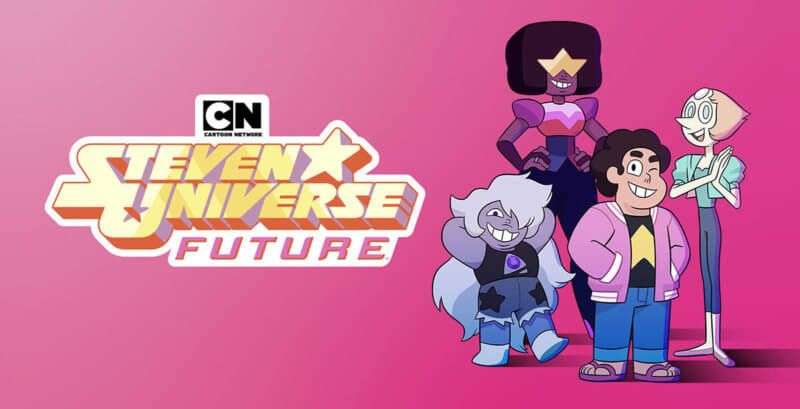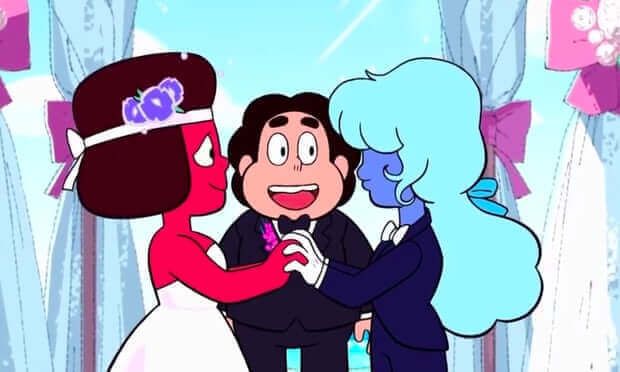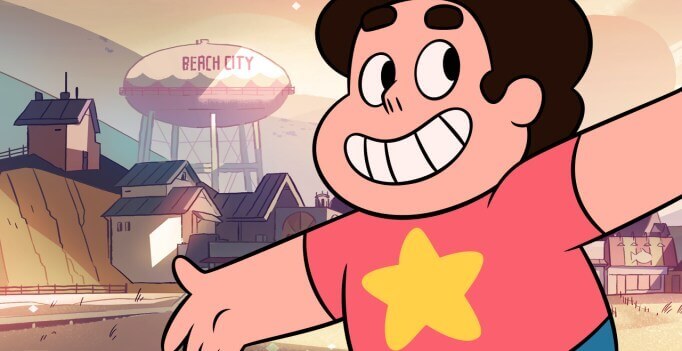A Love Letter to Mr. Universe: The Impact of Rebecca Sugar’s Steven Universe
I first watched Steven Universe back in 2016 when I worked as a Content ID Assistant for a social media company, managing a wide range of television shows on video streaming platforms and social media accounts. It was one of the many animated shows that I got the opportunity to work with and the moment I laid my eyes on the season four episode Mindful Education, I knew that this was no ordinary Cartoon Network show.
Having been a fan of the series’ amazing collection of songs, the beautiful craft put into the animation and how the show has impacted and changed the way young audiences see diversity and sexuality, it does sadden me that the series that has pushed so many boundaries aired the last episode recently from the epilogue series Steven Universe: Future. But in the words of Garnet in the final episode “Wherever you end up, we’ll visit you to talk, to listen, to be there, whenever you need us. We love you, Steven.” Love has always been a major theme of the series and it’s fans; and the team of animators at Cartoon Network and creator, Rebecca Sugar, have given it their all to create something entirely new and special for audiences young and old.

Steven Universe follows the Crystal Gems, a small group of alien guardians who protect the Earth from invaders known as the Homeworld Gems and their leaders, the Great Diamond Authority. The Crystal Gems are led by the headstrong and composed Garnet alongside her teammates; the spontaneous and immature Amethyst and the idealist and sophisticated Pearl, the last surviving members of the Crystal Gems.
But they are joined by teenager Steven Universe, who is part human and part Gem, and goes on many dangerous and magical adventures with them to fight corrupted monsters and stop future threats. Throughout each season, he tries to learn how to use his powers inherited from his mother and previous leader of the rebellion, Rose Quartz, who sacrificed herself for him. We see him slowly mature and learn how to use his powers responsibly while also living in his Rose’s shadow and take on the responsibilities that she inadvertently left behind.
Compared to most animated shows over the past decade, Steven Universe features some of the most intriguing and layered characters that have led to many accomplishments in both the storytelling and relationships surrounding diversity and representation.

Ruby and Sapphire in Steven Universe – First same sex wedding on children’s television
Without spoiling major plot points or character revelations for those who may not have watched the series, it has had the honour to be the first show aimed at young viewers to feature a same sex couple and then, a few years later, show the first gay wedding on children’s television. Between these two key moments in television history, the writers have been able to explore sexuality and acceptance in such a wide, open way that it has become a natural part of the series that impacted the vast range of characters and the LGBT+ fans that have celebrated it. From Pearl’s grudge towards Steven’s father for Rose Quartz’s love to Garnett’s reveal at the end of season one being explored through season two to Steven confidently wearing dresses to Stevonnie coming out as a non-binary, intersex person for a Dove project, the series has continued to evolve around these themes and it has become effective with the characters emoting and reacting in unique and ever-changing ways.
This has led the way for progress in representation for other animated content and has become the pioneer for the modern standard for LGBT+ characters and narratives. Whether it’s Netflix’s She-Ra and the Princesses of Power or Nickelodeon’s Loud House, Steven Universe’s focus on these important relationships and perspectives have been able to show everyone how they can write and give depth to characters in a way that has not been explored before. This would not have been possible without the team of talented writers being able to explore these themes of love in such a natural, honest and approachable way. And with most of it being told through song and beautiful imagery, the animators and musicians have accomplished this in spades.

But what was the journey that got Steven Universe made, and what did the series’ creator, Rebecca Sugar, go through to impact children’s animation?
Rebecca studied at the School of Visual Arts in Manhattan, New York and before and shortly after she graduated in 2009, she was already catching the eyes of the animation industry. Her thesis short film Singles was one of the titles selected to be screened at the 2009 Cartoon Brew’s Student Animation Festival and with her previous animated short films exploring unique art styles as well as animating different body types, her artistic talents could be seen early on in her career. Even the comic books she drew were full of a wide range of emotions from the characters’ expressions and body language in each panel that gave Don’t Cry for Me I’m Already Dead and Pug Davis more emotional depth compared to other short or independent comic books.
After graduating, Rebecca moved to LA and got to work on two significant projects, one of which would impact her for the rest of her professional life. She got to briefly storyboard Genndy Tartakovsky’s Hotel Transylvania (specifically the scene where Mavis sees the sunrise), but she also became a writer and storyboard artist at Cartoon Network on Pendleton Ward’s Adventure Time. It was the latter production where she would become a recognisable name at the animation network and become strongly associated with Adventure Time’s beautiful and crazy world. Her work as a storyboard artist and writer earned her an Emmy nomination for the acclaimed episode It Came from the Nightosphere and as well as writing episodes, she also wrote some of the most iconic songs throughout the series including I Remember You, Bacon Pancakes, Everything Stays and Time Adventure.
In 2013, the pilot episode of Steven Universe was screened and was successfully picked up and while it went through some artistic changes up to the first episode, the series kept the characters and concepts intact before evolving over the course of the original fifty two episodes. And with everything that Rebecca was able to do during her time on Adventure Time, she was able to create a television series that was able to grow a beautiful collection of songs and feature storylines that were able to mature and grow alongside the protagonist.
This would make her the first female creator at the company and her hard work would lead to the series running for five seasons, a feature length film, a twenty episode long epilogue series, a successful comic book series and several video games.
Over the past seven years, Rebecca Sugar and everyone at Cartoon Network have created one of the most important and emotionally-driven pieces of animation available on children’s television. Like Adventure Time and other shows that came out afterwards, it made Cartoon Network a place where mature and forward thinking animation could be produced that made the industry stop and look at its impact on audiences.
Steven Universe is currently available to stream on Netflix (UK). Learn more about the show’s origins in our 2014 interview with creator Rebecca Sugar.


